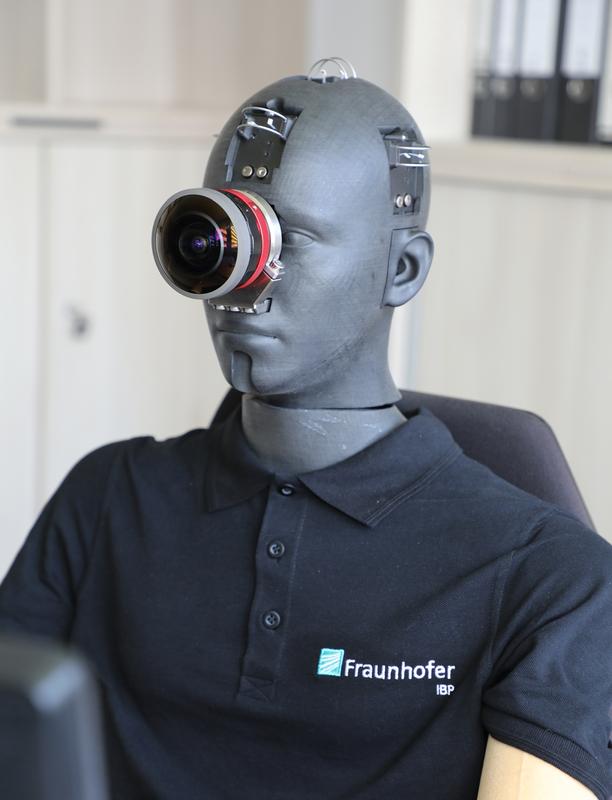Improved Indoor environmental quality in Industrial Workplaces
Researchers at the Fraunhofer Institute for Building Physics IBP have set out to improve the work environment for production employees. They have developed an analytical concept that combines measurements of temperature, air quality, lighting and noise with workers’ subjective perceptions. As people become more comfortable, efficiency and productivity could also increase.
A workplace with a pleasant indoor climate and glare-free lighting where overall noise levels and bothersome background noises are minimized is key to ensuring people’s comfort at work. Studies of health, performance and wellbeing at the workplace have focused mainly on office settings in recent years. Working under the OPTIMA PRO initiative, researchers at the Stuttgart and Valley (near Munich) locations of the Fraunhofer Institute for Building Physics IBP have now set their sights on manufacturing workplaces as well.
OPTIMA PRO stands for “Optimized Performance in Temperature, Illumination, Movement, Acoustics and Air Quality at Production Workplaces.” This concept marks the first time that measurements of the work environment are combined with surveys of employees focusing on their subjective wellbeing. Respondents are asked about factors such as their perception of heat, whether noises are bothersome to them and whether the lighting in the workplace is pleasant. Considering all of the objective and subjective data as a whole yields a rich and detailed picture.
This methodology is useful for companies that are building new production sites or optimizing existing work environments and want to design settings that support good performance and health. Plus, a work environment with high comfort levels also boosts motivation.
Complex conditions on the factory floor
Conditions in production settings are significantly more complex than those found in offices, as bothersome factors such as noise, air currents, smoke, dust and vapors are more common in industrial environments. Sabine Giglmeier, Head of Innovation Management at Fraunhofer IBP, comments: “The environmental conditions on a factory floor are highly changeable. Machinery is powered on or off, gates open for a delivery and let cold air in, or furnaces are fired up, which can make the areas around them very hot.”
Chief Scientist Maria Zaglauer, who manages the project at Fraunhofer IBP, explains the idea behind Optima Pro: “The existing measurement concepts are not sufficient to protect employees’ long-term health and sense of wellbeing in this challenging environment. That’s why we’re developing an approach that combines a differentiated measurement toolkit with individual surveys of the people involved. This makes it possible to achieve a holistic evaluation of the work environment.”
DressMAN system with 30 sensors
In a project called Work-BW: Gesunde, produktive und energieeffiziente Industriearbeitsplätze (Work BW: Healthy, Productive and Energy-Efficient Industrial Workplaces), financed out of state funds allocated by the Baden-Württemberg state legislature for the InvestBW program, the researchers at Fraunhofer IBP are working on the next iteration of their DressMAN measurement system: DressMAN360°.
DressMAN was originally designed to analyze thermal comfort in interior spaces, particularly in vehicle cabins. Michael Visser, Senior Scientist and expert for thermal comfort at Fraunhofer IBP, leads the development of the DressMAN measurement system and coordinates the technical integration of new perception paths — with the goal of establishing the method as an industrial measurement standard.
The idea behind DressMAN is to combine sensor-based measurements with subjective perception data. “Technological advances and better scientific understanding are enabling the development of improved prediction models for indoor comfort, for example in the workplace,” Visser says.
The Fraunhofer technology makes it possible to discern complex interactions between the work environment and subjective human perceptions. Zaglauer explains: “A steady noise from building equipment, such as a ventilation system, is perceived as bothersome. But when that system is turned off, other noises suddenly become audible, and they might be much more disruptive than the steady sound of the ventilation.” As another example, people may perceive the ambient temperature as higher if a warmer color temperature of the light is used.
As a whole DressMan360° and OPTIMA PRO become valuable tools for companies, both to evaluate existing workplaces and to align challenging production environments to the requirements of occupational health management. “Good conditions, whether in production or in office settings, ease the strain on employees and ultimately also reduce absences due to sick leave. This can help restore the appeal of physically demanding industrial jobs among skilled workers,” Giglmeier says.
Weitere Informationen:
https://www.fraunhofer.de/en/press/research-news/2025/juli-2025/improved-indoor-environmental-quality-in-industrial-workplaces.html
Die semantisch ähnlichsten Pressemitteilungen im idw


